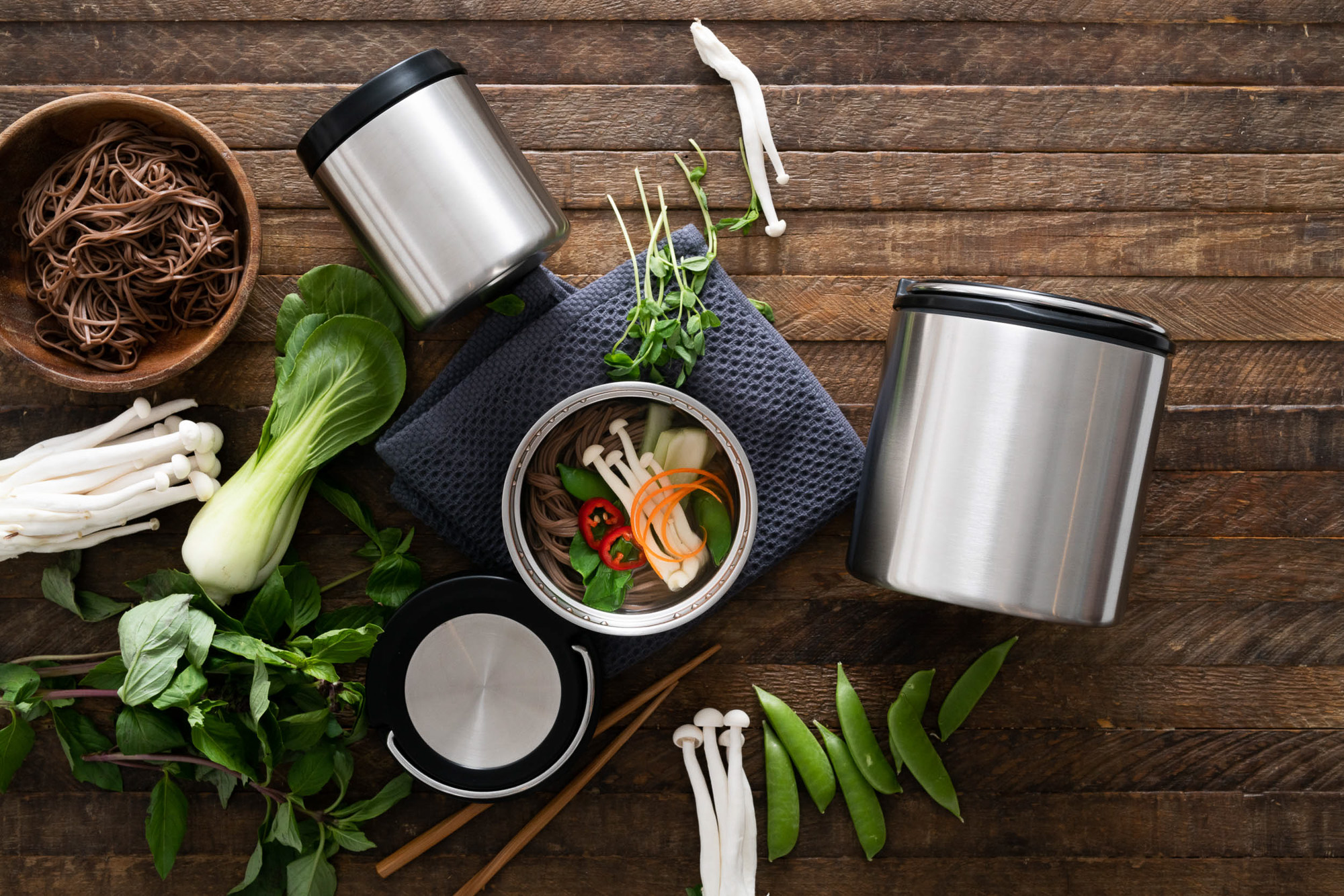Editor’s Note: This food storage article was originally published in Overland Journal’s Summer 2023 Issue.
If you think about it, food should always come first. It’s the fire behind everything we do, from everyday human functioning to scaling cliffsides and hiking through high mountain passes. Living necessitates eating. Living adventurously? So much more so. Dream big, eat big, do big.
For many busy travelers, though, food is left as a second thought. Of course, we’d all probably rather think about getting to the next exciting destination than what we’re having for dinner on the way. But our bodies have different priorities. You can only ignore biology for so long until it interrupts all your best-laid plans—or throws them out the window entirely if you don’t have enough energy to keep up.
Instead of letting the hanger win, channel your inner Boy Scout: Be Prepared. Have provisions on hand at all times, so you never have to say no to any bright idea that pops into your mind. And not just any food. Good food, fresh food, food that you crave. Because the best food to fuel you is that which you actually eat—there are only so many jaw-breaking, shelf-stable bars a person can stomach.
To manage this on the go, you need reliable ways to store your larder. That’s “ways” in the plural. A one-size-fits-all approach isn’t going to cut it here. Foods can be pretty picky about their ideal storage situation. Temperature-dependent ones need insulation; leaky ones need security; perishables need preservation. Get it wrong, and you’ll end up with an inedible mess on your hands.

It’s not so tough for those in stable homes with refrigerators within reach. You can get away with throwing something in a random bag and tossing it on the shelf until tomorrow. But keeping your food happy gets much more complicated when a cooler with limited ice retention, crammed behind the driver’s seat underneath a pile of loose gear, is all you have to work with.
Food storage options fit for travelers take your fast-paced lifestyle into account. They make up for missing appliances and fill the gaps that home-dwellers take for granted.
At the same time, they’re not extravagant. Subtlety is key here. You want containers that are so streamlined that they fade into the background of everything else in your life that matters more.
And then there’s longevity to think about; they need to last long enough to be worth the cost of going beyond your basic plastic variety. You don’t have room for an extensive inventory of them, either. Each container should be able to withstand back-to-back uses without carrying over old flavors or falling apart. That’s for the sake of your space, your wallet, and your planet. Durability and sustainability go hand in hand.
These six superior containers don’t try to do it all. They each have a particular job to do, and they do it well. Together, they’ll cover the bases so that you don’t have to compromise on food in order to live out your nomadic dreams. In fact, they’ll make those dreams more possible than ever. A fueled life is a full life. Fill yours up to the brim.
Planetary Design Airscape Coffee Canister
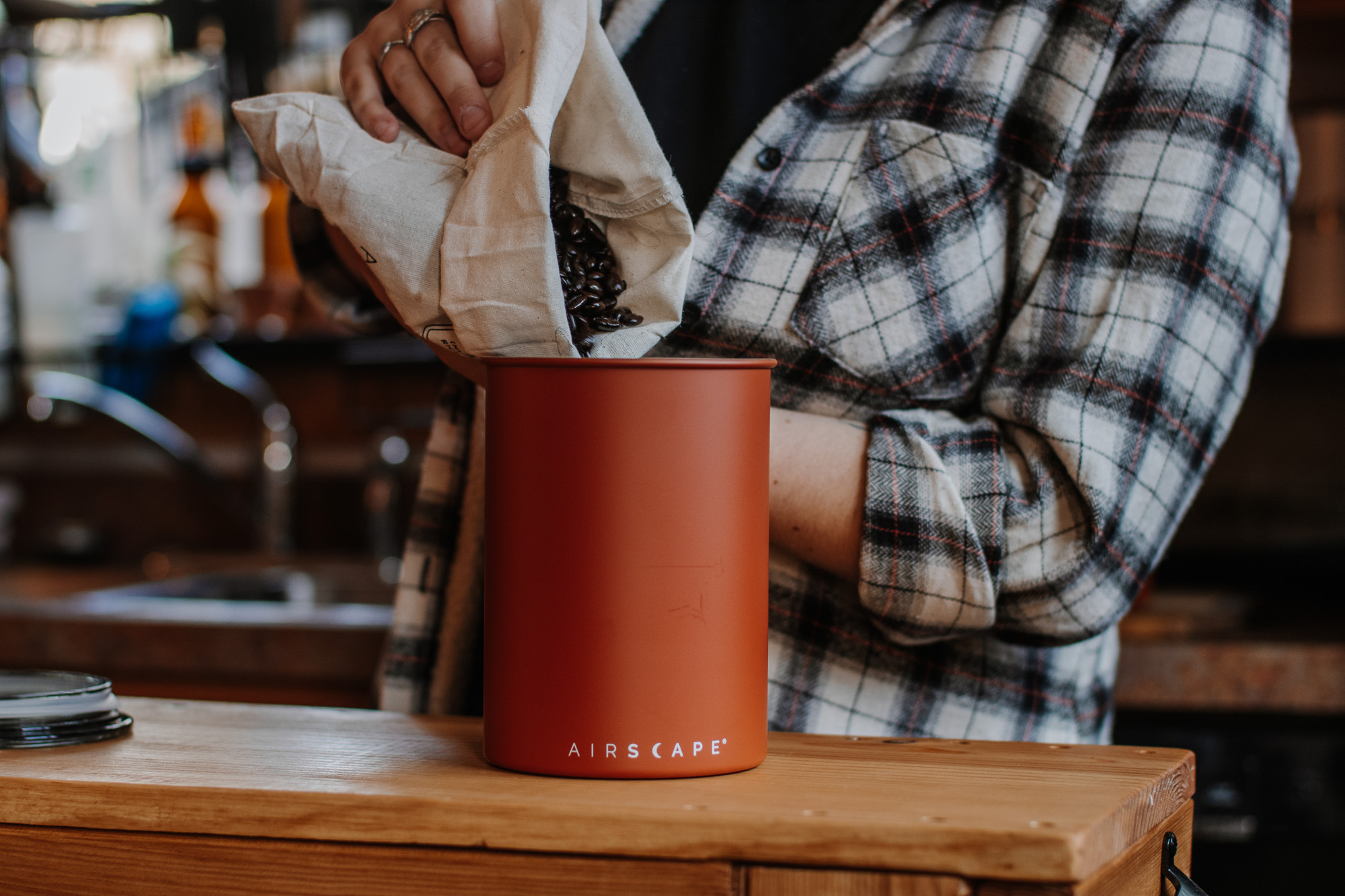
A good day starts with good coffee. But if you’re anything like me, it took too long to learn that the process of making good coffee isn’t as simple as it seems. Those beans have pretty high standards conducive to tasting their best. They need to be fresh, ground moments before making your java, soaked in water heated to the perfect temperature (a little over 200 degrees), stirred only enough to extract the flavor but not so much as to overagitate them, and brewed for no more than four to six minutes. Any deviation from the ideal scenario gives the final product a distinct sour flavor. No wonder I thought I didn’t like black coffee; I was breaking all the rules.
You’re on your own for a lot of that process. But the Airscape canister from Planetary Design takes care of the first part, keeping your beans fresh. They’ll taste just as good after weeks of travel as they do on day one at the roaster. It’s a vacuum-sealed container that removes all the oxygen from the interior. Oxidation makes coffee beans lose their flavor and turn sour, so removing the air extends their shelf life by a large margin. Coffee beans stored this way can stay fresh for six to nine months, compared to a measly week or two otherwise. It’s a no-brainer for your wallet and your taste buds.
The Airscape uses a double-lid system to create the vacuum. The inner lid plunges down and suctions onto the wall of the container. Push it down until it sits right above the height of the beans, then lay the handle flat to close off the airflow. The outer lid then rests on top for secure closure. This system keeps coffee fresher than other canisters because you can adjust the inner lid to match the volume. All the stale air gets trapped in the upper compartment, whether it’s full to bursting or you’re scraping the bottom.
On top of that, the Airscape takes other quirks of the nomad life into consideration, too. It’s made from lightweight but burly stainless steel that can handle any bump in the road (literally) without a scratch. A rubberized bottom keeps it from slipping and sliding around with every sharp turn in the first place. It comes in two sizes and nine different colors to match whatever vibe you have going on or space you have available. And, as only overlanders can genuinely appreciate, it’s not a one-trick pony. Tired of slinging around that giant bag of rice or—dare I say it—don’t like coffee? Grab a few canisters and treat your dried goods to a cozy new home.
$31/small, $36/medium | planetarydesign.com
Klean Kanteen TK Insulated Canisters
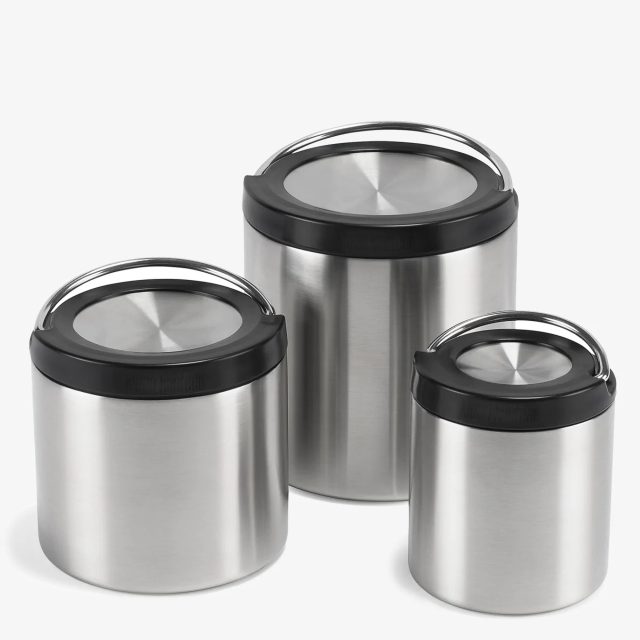
Once the coffee’s brewed right, there is one more step before the day can really start: breakfast. I have a thing about hot food—especially in the morning. I like to sleep cold, which means that I wake up each morning wanting nothing more than a hot bowl of oatmeal. If there’s not steam wafting into my face with each bite, it’s not ready yet.
All this to say, temperature matters to me—a lot. These insulated canisters from Klean Kanteen are the first to meet my heat expectations. As soon as my precious bowl of oatmeal reaches the right temperature, I dump it right into a TKCanister until I’m settled into my seat and ready to dig in on the way to my next destination. Whether that’s five minutes or two hours, it still comes out steaming. I’ve even whipped up my breakfast the night before without much of a drop in temperature by the next morning.
But even if you’re not a breakfast fanatic like me or have more normal opinions about food temperature, these canisters make eating on the go feel much less haphazard. A warm meal makes anywhere feel homey, from the driver’s seat to a random park bench. I can’t handle too many picnic lunches thrown together from stale crackers and cold hunks of cheese before feeling homesick for anywhere with a full-size stove. The ability to take toasty food everywhere I go has had a real impact on my mood.
A double-walled insulation system, combined with a thoughtful lid design that threads on the inside of the canister, does the trick for trapping the heat in. They’re easy to eat out of, thanks to a wide lip and a rounded bottom so you can scrape up every last nibble. Three different sizes cover the whole range of hunger levels, from a light snack to a post-adventure feast. Strap the handle to your bag or swing it from your pinky finger when your hands are full. The possibilities are endless.
So far, I’ve used these canisters for almost every meal or snack throughout the day. We’ve covered breakfast already, but I’ve had success with soups, smoothies, casseroles, hard-boiled eggs, and hot drinks too. No leakage, no hassle, no disappointing lukewarm temps. The larger canisters do retain the right temperature for longer than the smallest. The lids can also be a bit tough to unscrew, but I’ll take that in exchange for such a secure seal. And hey, weren’t we just talking about multi-purpose? No harm in a quick forearm workout before a hearty meal.
$105/set of three | kleenkanteen.com
Stasher Bag Starter Kit
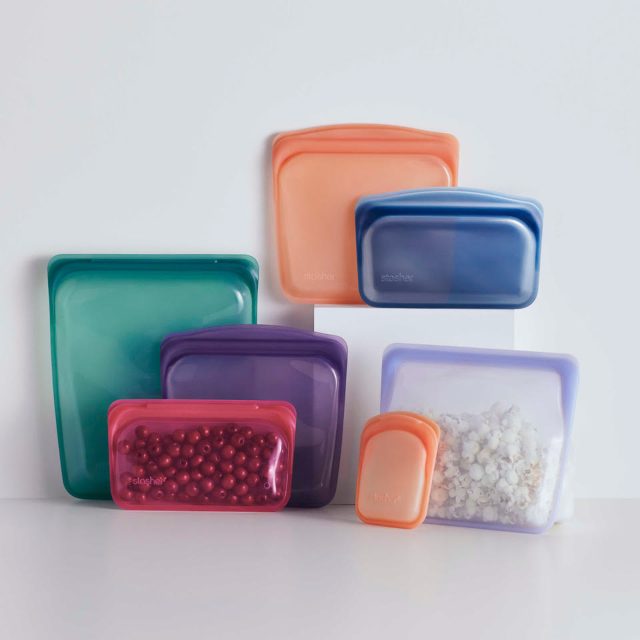
Okay, so not all food needs to be heated to the brink of oblivion; some truly do taste best at room temperature. For those, don’t turn to ziplocks. I’m pretty sure everyone reading this understands the pitfalls of single-use plastic by now, but as a recap: Overflowing landfills. Chemical leachates. Greenhouse gas emissions. Wildlife entanglements. Plain old pollution. You get the gist.
Besides, there are few things more frustrating than a flimsy plastic bag. You can’t trust it to contain anything even remotely juicy as the zipper always breaks at the worst possible moment, and they’re nearly never the right size for what you need.
Don’t get me wrong, I love a good baggie. No other storage solution makes such good use of space. But do yourself a favor and pick up a pack of Stasher bags instead.
These silicone bags make up for all the failings of traditional plastic bags. They’re sturdy, dependable, reusable, and functional. They come in a wide range of sizes and shapes, too, so you’re not stuck trying to squeeze a burrito as big as your head into a sandwich bag without ripping it. The “pocket” size has turned out to be my favorite, as it’s the perfect container for little bites, like a handful of trail mix, when a typical snack bag seems like overkill. The Stand-Up Stasher comes in as a close second. It’s such an unexpected convenience to prop it up on a table without having it tip over.
I’ve tested each of the bags in this starter kit for four important factors: leakage, breakage, smellage, and stainage. I’m happy to report that they passed each test with flying colors. Once the Stashers are fully sealed (make sure the edges are lined up properly, as this was my only struggle with these bags), then even pure liquid won’t leak out from the top or seams. Neither the sharp tines of my fork nor being stuffed into my climbing bag and pinched by carabiners managed to pierce any semblance of a hole in these bags. And after a quick scrub, you’d never know what was in there last—even after tuna salad sandwich day.
As an additional bonus, these bags are oven- and microwave-safe. Make a whole meal right in the bag, then eat straight out of it, or bring it along for later with no wasted dishes. I like to do a lot of food prepping before leaving on longer trips, and these were perfect for storing each meal and snack. They lined up so efficiently in my cooler that I had room for a few extra treats for once—hello, impulse-buy pumpkin pie. I was a convert from that moment on.
Yes, these are pricier than the average ziplock. But think of it this way: you’re getting entire boxes worth of those bags in a single Stasher. You don’t need many of them to get by. Invest in this Starter kit, and you’ll likely never have to buy another ziplock again—short-term hassle, long-term gain.
$94/7-pack | stasherbag.com
GSI Infinity Storage Set
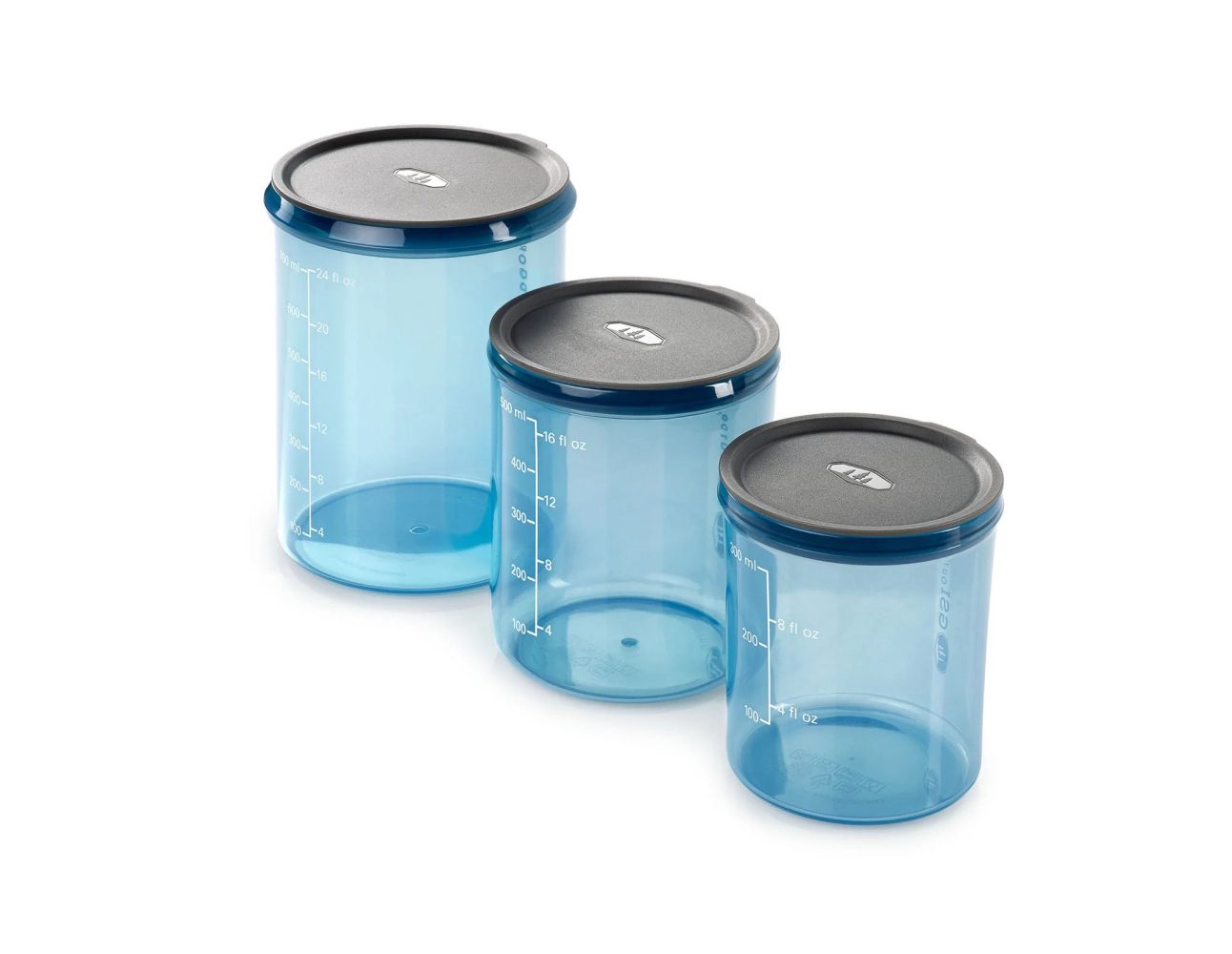
There were a select few food items that didn’t work well in the Stashers. Namely, powders and grains like rice or cereal. They would get stuck in the zipper and keep the bag from closing properly, so I would open up my duffel after a day on the road only to find loose Rice Krispies scattered everywhere.
For these and similar items, the Infinity storage set from GSI came in clutch. I used to use Mason jars for this purpose, but these canisters are significantly lighter, and I don’t have to worry about shattering them to pieces in my clumsier moments. The see-through sides are my favorite feature. I can easily distinguish between different flavors or types with a glance. If you’ve ever accidentally poured lemon-lime electrolyte mix into your oatmeal instead of chocolate protein powder, you’ll understand why this matters.
These containers are secure without causing too much frustration. The low-profile lids line up perfectly with the edge. It does take a bit of finger strength or some sturdy nails to pry off the lid using the small tab that protrudes out ever so slightly. But like the TKCanisters, the slight struggle is worth a dependable seal. I can’t bear to lose any more precious Rice Krispies.
The graduated markings make for another helpful feature. I appreciate knowing exactly how much of something I have on hand. There’s no room for too much and no time for too little. I have a better chance of packing the Goldilocks amount this way. And if I ever get around to whipping up a batch of roadside cookies, they can double as measuring cups.
Like the Airscape, the Infinity containers are ideal for bulk storage, and they come in handy 12-, 16-, and 24-ounce sizes. I probably wouldn’t pull these out for meal prep (though they’d do in a pinch). And given the narrow cylindrical shape, they’d be tough to eat straight out of. GSI also warns against exposing them to extreme temperatures or tossing them in the microwave. I find that they’re best kept in the cabinet for easy access to the ingredients you reach for most often. Lightweight polypropylene construction means they won’t weigh down even the most makeshift shelves. And when not in use, they stack together like little Russian dolls for maximum space efficiency.
As I mentioned, these are made of plastic. But the main issue with most plastics is their lack of longevity. As opposed to the flimsy single-use variety, the Infinity containers are made to hold up for the long haul. Coming out unscathed from heavy use during weeks of back-to-back travel in cars, planes, by bike, and on foot, through no less than three drastically different climates confirms this. That’s more than I can say for your Tupperware.
$15/set of three | gsioutdoors.com
Glasslock Rectangle Set
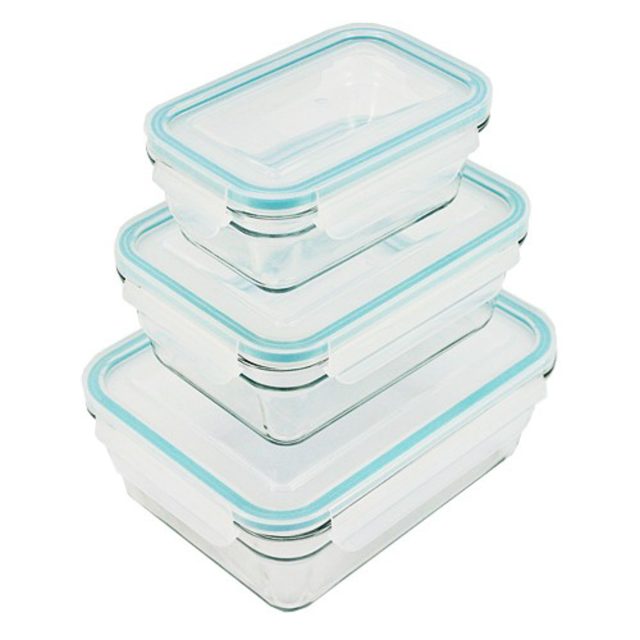
On that note, your typical plasticware might not technically classify as single-use, but it won’t last forever. Mine have always made it a handful of weeks (if that) before starting to fall apart. That’s not much better.
There’s something about that classic rectangle shape, though. I’m more comfortable eating out of a nice, shallow parallelogram where I can see everything in front of me than reaching into a deep cylinder or rifling through a bag. But I prefer a longer lifespan.
If you’re looking for a more sustainable alternative, go for glass. It’s heavier, and that’s no minor sacrifice for a lifestyle that prioritizes minimalism. Every ounce really does matter. But durability counts even more in my mind. This set from Glasslock will probably last for years—if not decades—to come.
There’s no shortage of glass containers out there. But Glasslock stood out to me because, despite the relative weight and bulk of glass, the brand still keeps things simple. All of their containers offer the same basic features: wide, open base; flat lid; removable silicone gasket; four snap closures. Fewer details mean less that can go wrong. I’ve tried other brands over the years that go too far with the bells and whistles. The “extras” end up failing before any of the essential features I actually care about. Snap closures are a good example: I’ve never had a Pyrex that didn’t lose at least one of its snap limbs within a month. I think this is because Pyrex tried to make the snaps a little too user-friendly, opting for a more malleable construction that’s easier on the fingers when opening and closing. The biggest gripe customers have with Glasslock is that the lids can be tough to snap into place. I agree, but—and this is becoming a theme—I’ll take heft over fragility. The lids are the only part of these containers made from plastic instead of glass. Glass will last, but it’s important to keep the plastic components around for as long as possible—one less broken lid in the landfill.
Basic isn’t bad. This is the no-frills container you won’t have to overthink. Throw it in the oven, toss it in the freezer, let it tumble out of your bag and slam into the ground; it’ll live through it all to see another day.
$29/set of three containers and lids | glasslockusa.com
HydraPak Soft Flasks
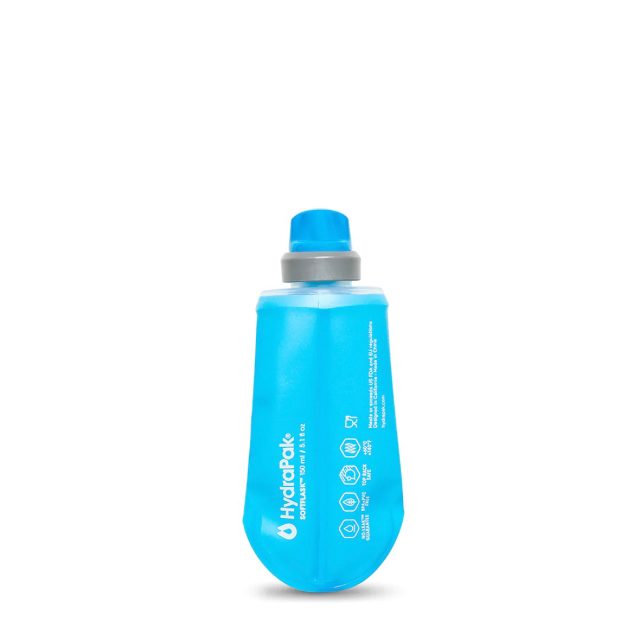
But basic isn’t always the way to go. Pretty much any type of food can be elevated to the next level of tastiness with the help of the perfect sauce. Just because something’s technically edible without it doesn’t mean it should be. Plain rice and chicken? Bland and blah, no thanks. Add a little coconut milk, a squirt of sriracha, and a spoonful of peanut butter, though, and bam—you’ve got yourself a fancy curry.
And speaking of peanut butter, I don’t think it’s possible to live a full life without it on a daily basis. But the bulky jars don’t play nice in cramped spaces. That applies to most other condiments, sauces, and viscous foods. Liquids adapt to fit the shape of their containers, so why do those containers have to be so impractical?
I choose my destiny. And that destiny includes plenty of peanut butter and saucy goodness with every meal, minus the cumbersome containers. Enter the HydraPak SoftFlask. These are designed with long-distance adventures in mind to hold hydration and nutrition gels for slurping down on the fly. But even if you’re not headed out on a 20-mile run through the wilderness, these flasks deserve a spot in your food storage quiver.
The SoftFlask comes in two different sizes, 150 and 250 milliliters. The small one works best for thicker, denser things that you might only need a dollop of at a time—think peanut butter, jelly, honey, mayonnaise, ketchup, mustard, cream cheese, sour cream, curry paste, or salad dressing. Fill the large one with thinner liquids that you’ll use in higher quantities: milk, coffee creamer, tomato sauce, soup, smoothies, etc. The only thing you probably don’t want to store in these is your favorite adult beverage. TPU and alcohol don’t mix well; the ethanol tends to eat away at the material and will probably make your bottle smell like a bar for the rest of its life. Choose an actual flask for those. Anything else is fair game.
The best part about these flasks is that they fit in the palm of your hand for easy squeezing. Simply twist the valve to the left to open and back to the right to close. You can control how quickly the contents come out by twisting it more or less open. Be careful about the one downside to this system: the nozzle and the main cap unscrew in the same direction, so it’s easy to accidentally loosen both at the same time and cause a leak. Hold down the cap with one hand and unscrew the valve with the other to steer clear of a spill. The flasks also come with a bite valve if you want to sip soup or a smoothie straight from the bottle.
As you use up the contents, squeeze these bottles like toothpaste tubes to get the air out and save as much space as possible. Roll them up into a tiny ball once they’re fully tapped. You’re more likely to lose them in the back of your kitchen cabinet than ever worry about them getting in the way.
$15, $14 | hydrapak.com
Our No Compromise Clause: We carefully screen all contributors to ensure they are independent and impartial. We never have and never will accept advertorial, and we do not allow advertising to influence our product or destination reviews.


